Biophysical performance indicators for secondary resources reveal positive effects at the community level in La Rinconada Marine Reserve (Antofagasta, Chile), SE Pacific Ocean
Submited: 2024-05-29 12:35:35 | Published: 2025-04-30 20:11:46
DOI: https://doi.org/10.3856/vol53-issue2-fulltext-3287
Abstract
Direct evaluations of the main resource Argopecten purpuratus and its accompanying benthic fauna developed between 1999 and 2013 in La Rinconada Marine Reserve (Antofagasta, northern Chile) confirmed the presence of two subsystems made up of different species that cohabit with the principal resource (designated SS1 and SS2). SS1 has a medium and fine sand substrate with a coverage of over 80% at the center of the red algae Rhodymenia corallina. In addition to the primary resource, the scallop A. purpuratus, we also found secondary resources such as Thaisella chocolata, Romaleon setosum, and, under ENSO conditions, Octopus mimus recruits. In SS2, which runs parallel to the coastline, coarser substrates are observed, mainly shells and quartzite gravel mixed with fine and medium sand areas occupied by the bivalves Transennella pannosa and Tagelus dombeii. Our results show that anthropogenic activities have not affected the abundance and size structure of secondary resources in SS1 and density and size structure in SS2, evidencing a permanent pre-recruitment of organisms. The information generated in this study can complement the current criteria applied to assess the performance of this reserve by accounting for the state of the main commercial resource of interest (A. purpuratus). We also discuss the benefits of a more integrative methodology that evaluates the benthic community and the ecosystem based on a conservation and management approach. An inventory of the recorded species in the marine reserve is also provided for the first time and may constitute a baseline for future studies.



